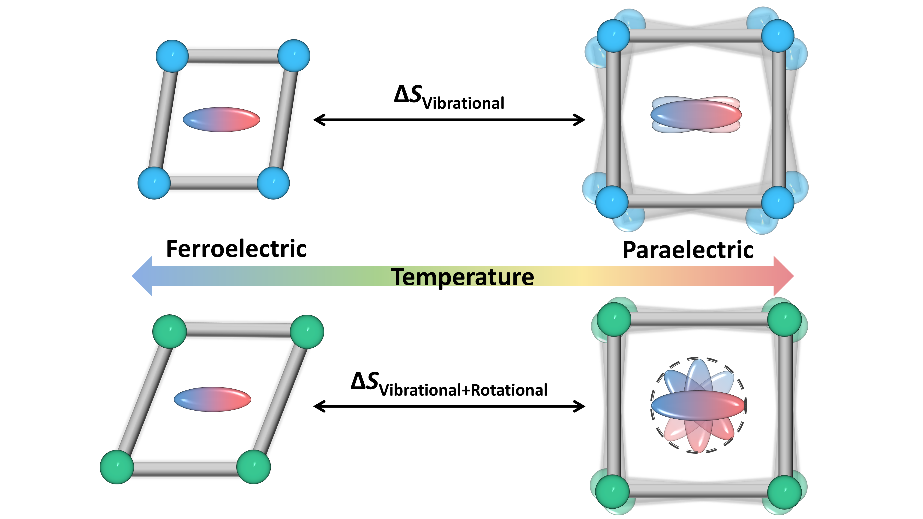Ferroelectric hybrid organic-inorganic perovskites (HOIPs) are attracting intense attention owing to their striking performance rivaling with that in perovskite oxides, ease of synthesis, low cost and environmental benignness. Despite the rapid discovery of many ferroelectric HOIPs, the intrinsic thermodynamic driving mechanisms of their ferroelectric transitions remain still not fully understood.
Dr. Alessandro Stroppa, Profs Xian-He Bu and Wei Li (Nankai University) and collaborators, an international team from Italy, China, UK, and Australia, have unveiled the nature of the ferroelectric phase transition of two prototypical HOIPs, including displacive [(CH3)2NH2][Mn(N3)3] and order-disorder type [(CH3)2NH2][Mn(HCOO)3]. The multidisciplinary study has been published in the Journal of the American Chemical Society.

Based on the spatially resolved structural characterizations and ab-initio lattice dynamics calculations, complemented by symmetry mode analysis, the team demonstrated that the vibrational entropy changes of extended perovskite lattice not only drives entirely the ferroelectric phase transition of the former, and but also makes an important contribution to the ferroelectric phase transition of the latter where the rotational entropy change of A-site has also an important role.
The rotational entropy change (order-disorder) has long time been considered as the primary origin of ferroelectric transitions in the community of hybrid perovskites. The authors identified the critical role of vibrational entropy changes in driving these ferroelectric phase transitions and they show that the vibrational entropy contribution is also critical in the order-disorder systems, which has been, so far, completely ignored by the community. This work reveals the vital importance of lattice dynamics in ferroelectric hybrid perovskites, and highlights that both the local and extended lattice fluctuations can lead to ferroelectricity. In this regard, it represents an interesting contribution for studying ferroelectric phase transitions of hybrid perovskites and even other hybrid crystals since it extends our understanding of origins of ferroelectricity from perovskite oxides to hybrid counterparts.
In summary, this study reveals the delicate atomic dynamics in ferroelectric HOIPs and open a new pathway for designing functional ferroelectrics through manipulating the collective lattice dynamics.


